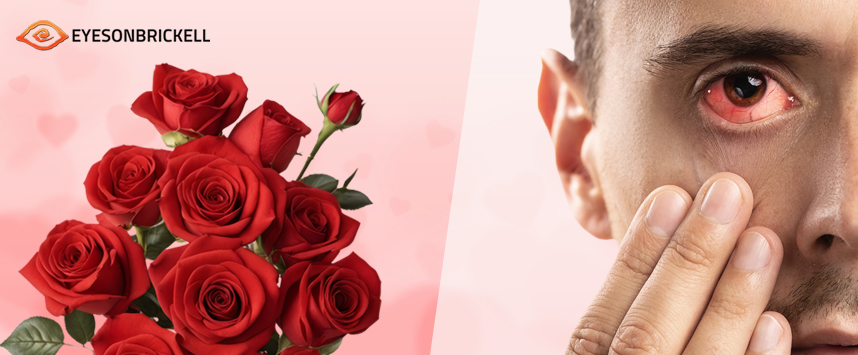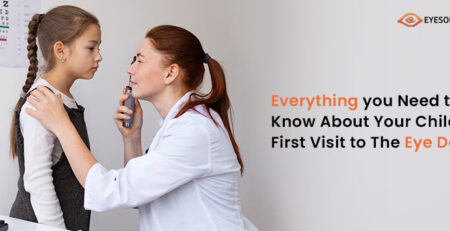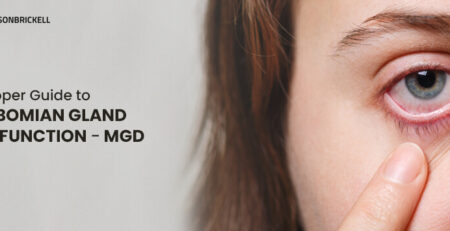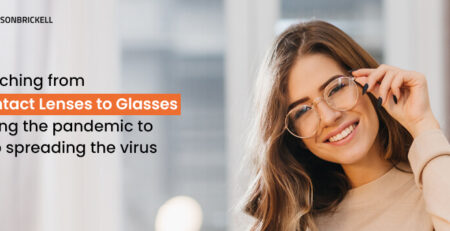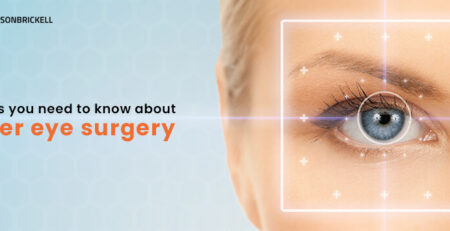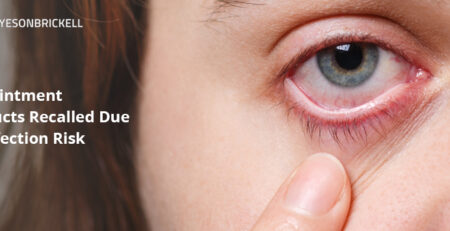What Do You Prefer On Valentine’s Day: Red Roses or Red Eyes?
Valentine’s Day is a special occasion celebrated by couples and lovers worldwide. The Day is about expressing love, warmth, and companionship. However, it is also an ideal time to show yourself some love and care. Instead of adhering to norms and traditions, you can indulge in self-care this Valentine’s month to feel better and add to your special Valentine’s Day celebration. Red roses are a famous symbol of Valentine’s Day, but red eyes are not. Bloodshot eyes do not exactly exude love or romance. In this article, we will discuss the causes of red eyes and simple treatments that can help you achieve clear, bright vision, making your eyes shine as much as your smile. So, let’s dive in and learn how to say goodbye to those bloodshot eyes!
What are Red Eyes?
Red eyes, also known as bloodshot eyes, happen when the blood vessels in the white part of your eyes become inflamed and noticeable, giving your eyes a pink or red appearance. If you’re curious to learn more about red eyes, you can always click here.
What Causes Red Eyes?
Here is a list of issues that can cause red eyes:
Allergies:
Allergies can impact your eye health and lead them to become swollen and red. A person with red eye (due to allergies) may also experience the following symptoms:
- Burning sensation in eyes
- Increased Tearing
- Itching
Dry Eyes:
As you may know, the eyes contain small glands that produce tears to protect and lubricate them. However, with dry eyes, a person’s eyes do not produce enough tears. Dry eyes can cause redness in the eyes, along with the following symptoms:
- A scratchy or burning sensation
- Blurred vision while reading
- Feeling like there is something in your eye
- Sensitivity to light.
Subconjunctival Hemorrhage or Injury:
A subconjunctival hemorrhage is when a blood vessel in the eye breaks, causing blood to leak onto the eye’s surface. Although it might look serious, it’s usually not harmful and disappears within one or two weeks.
The main symptom is redness in the affected eye and sometimes a minor irritation. You must see a doctor if you experience decreased vision and have a subconjunctival hemorrhage.
Eyelid Stye:
A stye is a condition where the meibomian gland in the eye gets blocked, leading to inflammation. It can happen on the outside or inside of either the upper or lower eyelid. When you have a stye, the area at the edge of your eyelid may turn red, swell up, and become painful.
Conjunctivitis:
Pink eye (conjunctivitis) occurs when the thin tissue that covers the inside of your eyelids and the white part of your eye (the conjunctiva) becomes inflamed. This inflammation can make the whites of your eyes appear pink or red. Other symptoms that may arise with pink eye include:
- A burning sensation
- Discharge of mucus or pus
- Feeling like there is something in your eye
- Increased Tearing
- Itching
- Sensitivity to light.
Blepharitis:
Blepharitis is a condition that causes inflammation of the eyelids. This can result in redness and swelling of the eyes or eyelids. Here are some of the additional symptoms of Blepharitis:
- A burning or stinging sensation
- Crusty eyelids in the morning
- Feeling like there is something in your eye
- Increased Tearing
- Sensitivity to light.
Uveitis:
Uveitis is a condition that causes inflammation in the middle layer of the eye. The middle layer is called the uvea. It is located between the white part of the eye and the retina. Uveitis can cause redness of the eye and other symptoms. These include:
- Blurred vision
- Eye pain and floaters
- Sensitivity to light
Scleritis:
When the white part of the eye (sclera) gets affected by inflammation, this condition is known as Scleritis. In that case, your eyes can become swollen and red. Scleritis has some other symptoms, including:
- Blurred vision
- Decreased vision
- Eye tenderness or pain
- Increased tearing
- Pain in the head, face, or jaw
- Sensitivity to light
In some cases, red eyes may also be a symptom of a more severe condition, such as angle-closure glaucoma, injury, or corneal ulcers.
It’s a common misconception that all cases of pink eye are contagious. While some types of pink eye, such as viral and bacterial conjunctivitis, are highly contagious, others, such as allergic conjunctivitis, are not contagious. It’s always best to consult a healthcare professional to determine the cause of red eyes and the appropriate treatment.
Why Should You Care About Red Eyes?
In most cases, red eyes are not severe, and you can get your issue treated with the help of home remedies. You may feel irritation and inflammation, causing discomfort and even blurred vision for a few days. With home remedies, this issue will go away. Moreover, according to Dr. Copty, if your eyes show the following symptoms, you may need professional help:
- Sudden changes in eyesight
- You may feel bad headaches and pain in your eyes
- You may have a fever
- Your eyes may get sensitive to light
- You may also have an upset stomach
- You are throwing up with red eyes
- An object causes red eye or a chemical splashed in your eye
Treatments For Red Eyes
As mentioned, many factors, including allergies, infections, dryness, eye strain, and certain medications, can cause red eyes. Even though, in most cases, red eye issues are not severe, you can treat your red eyes with the help of simple home remedies. Still, if your red eyes take longer to heal and make you uncomfortable day after day, you might need a professional’s help.
If you are experiencing red eyes, try the following self-care tips at home to get relief:
- Applying cool compresses to your eyes can help to reduce inflammation and soothe your eyes
- Artificial tears can also help to lubricate your eyes and reduce redness
- Avoid smoke, dust, and allergens.
However, if your red eyes are not getting better and you are feeling pain, blurred vision, or discharge, you should consult a professional like Dr. Antonie Copty, one of the best eye care specialists at Eyes on Brickell. Our professional will examine your eyes to determine the underlying cause of your redness. After determining the symptoms, Dr. Copty recommends prescription eye drops, medications, or other treatments to improve and prevent complications.
Why Choose Eyes on Brickell for Red Eye Treatment in Miami?
Valentine’s Day is a time to celebrate love and affection with your loved ones. While red roses are a classic symbol of love, why not consider showing some love to your eyes this year? The eyes are the most sensitive part of your body and require proper care and attention, just like your loved ones. At Eyes on Brickell, we understand the importance of eye care and offer various services to help manage red eyes and other eye conditions.
Our experienced team of eye care professionals can provide comprehensive eye exams, personalized treatment plans, and ongoing support to help you achieve optimal eye health. Whether you’re experiencing red eyes or other eye-related concerns, we’re here to provide the care and support you need to protect your vision and maintain healthy eyes.
So, this Valentine’s Day, instead of red roses, why not show some love to your eyes by giving them the care and attention they deserve? Contact Eyes on Brickell today to schedule an appointment and take the first step toward optimal eye health.

